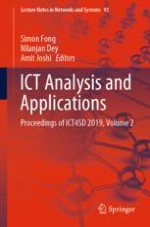2020 | OriginalPaper | Chapter
Technology Based Self-learning—Case of Zucate
Authors : Pradnya Chitrao, Pravin Kumar Bhoyar, Rajiv Divekar
Published in: ICT Analysis and Applications
Publisher: Springer Singapore
Activate our intelligent search to find suitable subject content or patents.
Select sections of text to find matching patents with Artificial Intelligence. powered by
Select sections of text to find additional relevant content using AI-assisted search. powered by
